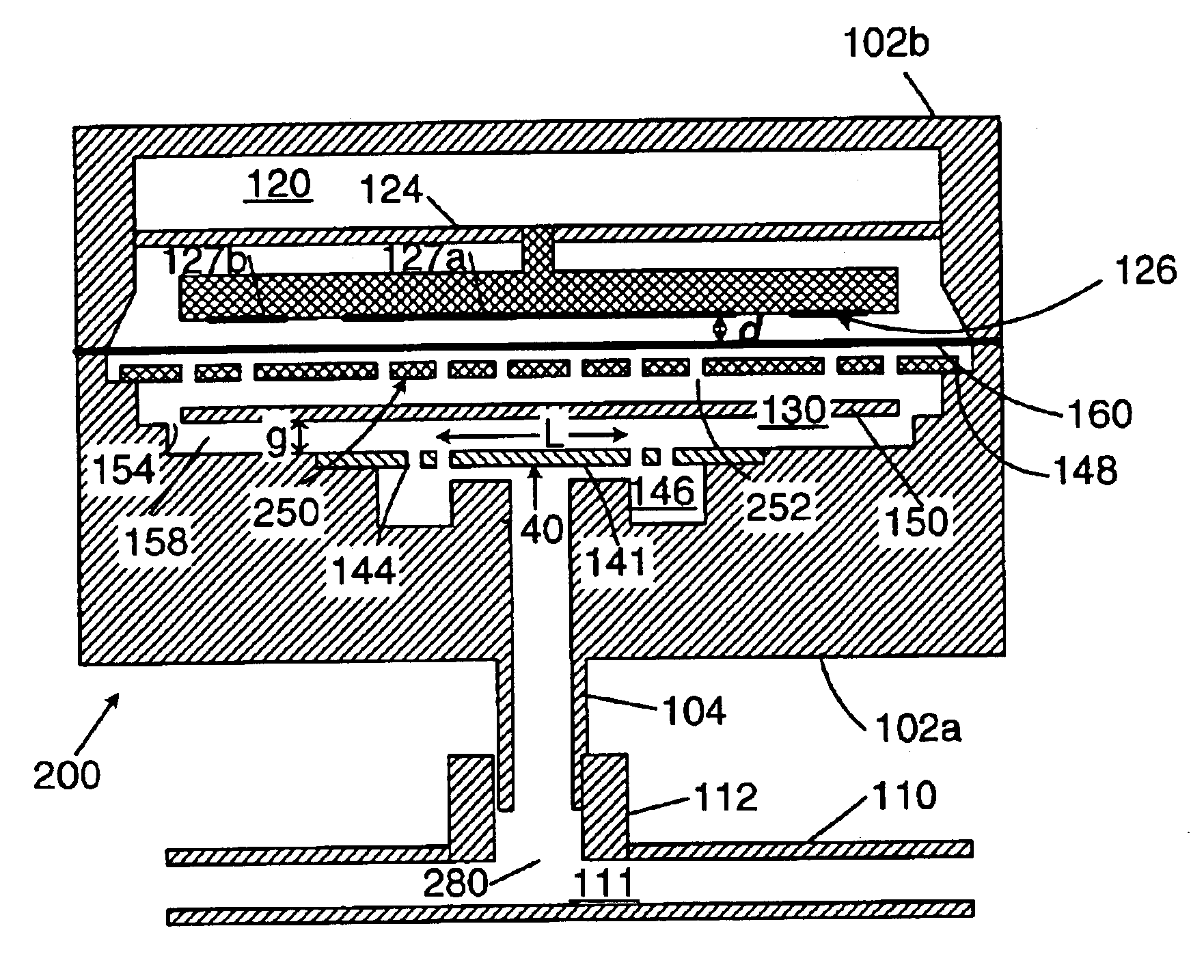Contaminant deposition control baffle for a capacitive pressure transducer
a capacitive pressure transducer and control baffle technology, applied in fluid pressure measurement, variable capacitors, instruments, etc., can solve the problems of large volume of particles or contaminants, output signals generated by such transducers, and undesirable characteristics of varying response, so as to prevent, reduce as much, the effect of contaminants on the performance of the transducer
- Summary
- Abstract
- Description
- Claims
- Application Information
AI Technical Summary
Benefits of technology
Problems solved by technology
Method used
Image
Examples
Embodiment Construction
[0031]FIG. 4A shows a sectional side view of a capacitive pressure transducer 200 constructed according to the present invention. In addition to the components shown (in FIG. 1B) in prior art pressure transducer 100, transducer 200 also contains a deposition controlling baffle 250 disposed in internal chamber 130 between diaphragm 160 and baffle 150. Material (e.g., gas molecules or particle contaminants) entering pressure transducer 200 enters through gas line 110 and passes through trap system 140, baffle 150, and finally through deposition controlling baffle 250 before contacting diaphragm 160. As will be further explained below, baffle 250 redirects the flow of contaminants within chamber 130 so as to control zero shifts within pressure transducer 200.
[0032]FIG. 4B shows an expanded view of a portion of transducer 200. More specifically,
[0033]FIG. 4B shows an expanded sectional side view of electrode 122 and diaphragm 160. As shown, diaphragm 160 may be thought of as being segme...
PUM
| Property | Measurement | Unit |
|---|---|---|
| aspect ratio | aaaaa | aaaaa |
| length | aaaaa | aaaaa |
| length | aaaaa | aaaaa |
Abstract
Description
Claims
Application Information
 Login to View More
Login to View More - R&D
- Intellectual Property
- Life Sciences
- Materials
- Tech Scout
- Unparalleled Data Quality
- Higher Quality Content
- 60% Fewer Hallucinations
Browse by: Latest US Patents, China's latest patents, Technical Efficacy Thesaurus, Application Domain, Technology Topic, Popular Technical Reports.
© 2025 PatSnap. All rights reserved.Legal|Privacy policy|Modern Slavery Act Transparency Statement|Sitemap|About US| Contact US: help@patsnap.com



